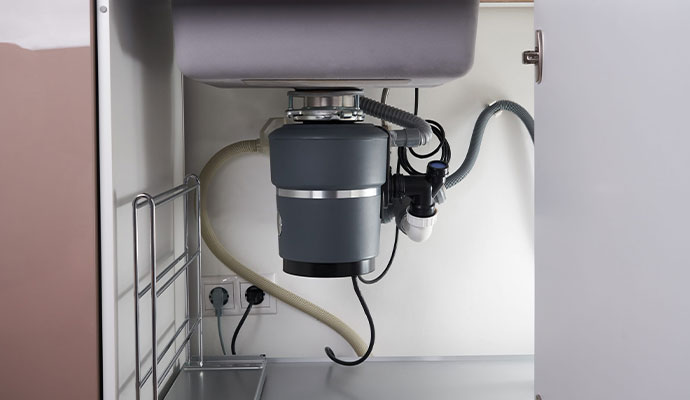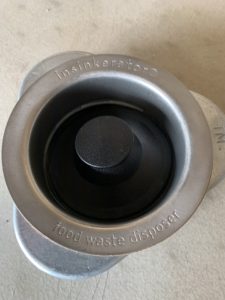Step-by-Step Techniques for Repairing a Leaky Garbage Disposal
Step-by-Step Techniques for Repairing a Leaky Garbage Disposal
Blog Article
In this article below you can find a lot of very good guidance with regards to Why Is .

Waste disposal unit are necessary cooking area devices that aid in taking care of food waste successfully. Nonetheless, a dripping garbage disposal can be a frustrating and unpleasant issue to deal with. Fortunately, lots of leaks can be taken care of easily with a few basic actions. In this post, we will discuss just how to take care of a leaking waste disposal unit successfully.
Intro
Waste disposal unit are mounted under kitchen sinks and are made to shred food waste right into smaller sized items, enabling it to pass through the pipes system easily. While these gadgets are normally reliable, leakages can happen gradually as a result of wear and tear, loosened connections, or damages to the unit.
Usual Reasons For Leakages in Rubbish Disposals
Worn Seals and Gaskets
Seals and gaskets play an important duty in avoiding water from dripping out of the garbage disposal. With time, these components can degrade, leading to leaks around the disposal device.
Loose Links
The connections between the waste disposal unit and the plumbing system can end up being loosened over time, triggering water to leak out during procedure.
Cracks or Holes in the Disposal Device
Physical damage to the waste disposal unit, such as fractures or openings in the real estate, can likewise cause leakages.
Recognizing the Resource of the Leak
Before trying to fix a dripping waste disposal unit, it is vital to recognize the resource of the leakage. This can normally be done with aesthetic examination or by carrying out simple tests.
Visual Examination
Examine the garbage disposal unit thoroughly for any kind of indications of water leak. Pay very close attention to areas around seals, gaskets, and connection points.
Checking for Leaks
One way to evaluate for leaks is by running water via the disposal system and checking for any type of visible indicators of leakage.
Devices and Materials Needed for Fixing a Leaking Waste Disposal Unit
Prior to beginning the repair process, collect the essential devices and products, consisting of a screwdriver, flexible wrench, plumbing's putty, replacement seals or gaskets, and epoxy or patching material for repairing fractures or holes.
Step-by-Step Overview to Dealing With a Dripping Waste Disposal Unit
Shut off the Power
Before attempting any repairs, make certain that the power to the waste disposal unit system is turned off to stop the danger of electric shock.
Situate the Leak
Recognize the precise location of the leakage and figure out the cause.
Tighten up Connections
Make use of a wrench to tighten any loosened connections between the disposal device and the plumbing system.
Replace Seals or Gaskets
If the leakage is due to used seals or gaskets, eliminate the old components and replace them with new ones.
Patching Fractures or Holes
For cracks or holes in the disposal device, usage epoxy or an appropriate patching product to secure the broken area.
Checking the Garbage Disposal After Repair Work
As soon as the repair service is complete, examine the garbage disposal by running water via it to guarantee that the leak has actually been settled.
Preventive Upkeep Tips to Stay Clear Of Future Leakages
To stop future leaks, it is necessary to execute regular maintenance on your garbage disposal. This includes maintaining it tidy, preventing putting non-food things or difficult objects down the disposal, and periodically looking for leaks or various other problems.
Conclusion
Finally, taking care of a leaking waste disposal unit is a relatively straightforward process that can be finished with standard tools and materials. By complying with the steps laid out in this article and practicing preventative maintenance, you can keep your waste disposal unit in good working problem and avoid expensive fixings in the future.
What to Do About a Leaking Garbage Disposal
A leaking garbage disposal often goes unnoticed until you confront a sopping cabinet, a foul-smelling puddle, or an audible drip-drip-drip from the unit. The fix can be frustrating, too, because the leak can stem from a number of components in the system. Fortunately, with a little sleuthing, you can zero in on the leak and—depending on the exact location—stop the icky oozing and repair the component that caused it. Worst case scenario, if it turns out that the garbage disposal must be replaced, installing a new one is a reasonable do-it-yourself task for those with basic plumbing skills. Read on to keep the cash you’d otherwise hand over to a pro.
Prepare to find the leak
Prior to testing the garbage disposal for leaks, unplug it at the wall outlet and turn off the power from the breaker box to prevent electrical shock. Then insert a watertight sink stopper into your sink drain and wipe the unit dry with a clean cloth. In any handy container, mix a few drops of food coloring into a few cups of water, and pour the dyed water onto the sink stopper to help you locate the leak.
Investigate the source
the top, where the disposal meets the sink drain the side, where the dishwasher hose or main drain pipe connects to the disposal or the bottom of the unit Inspect each of these locations while gliding a light-colored rag over the unit; the dyed water will readily show on the rag and reveal the location of the leak. If a leak isn’t immediately apparent, remove the sink stopper and pour a few more cups of dyed water down the sink drain, then check for leaks again. Leaks near the top of the unit are more likely to show themselves while the sink is plugged, while side and bottom leaks are more noticeable while the sink is unplugged.
The metal sink flange that sits directly inside the sink drain is typically sealed around the top with plumber’s putty (a clay-like sealant) and then secured from under the sink with bolts. If the plumber’s putty deteriorates, or the bolts loosen, the flange can no longer form a watertight seal between the sink drain and the disposal—which could cause a leak at the top of the unit.
To reseal the leaky flange, you must first detach the garbage disposal. Start by loosening the screws securing the main drain pipe to the disposal, then loosen the screws in the metal clamp securing the dishwasher hose to the disposal and detach the drain pipe and dishwasher hose from the disposal. Loosen the screws in the mounting ring that connects the disposal to the metal mounting assembly beneath the sink, then pull down the disposal and carefully set it on a clean, dry surface. Loosen the bolts in the mounting assembly with a wrench, then pull down the mounting assembly and set it near the disposal.

Do you like more info about Why Is ? Place a remark further down. We'd be interested to listen to your feelings about this blog post. We hope that you come back again in the near future. For those who enjoyed our post if you please do not forget to pass it around. Kudos for your time. Don't hesitate to come by our website back soon.
Call Today Report this page